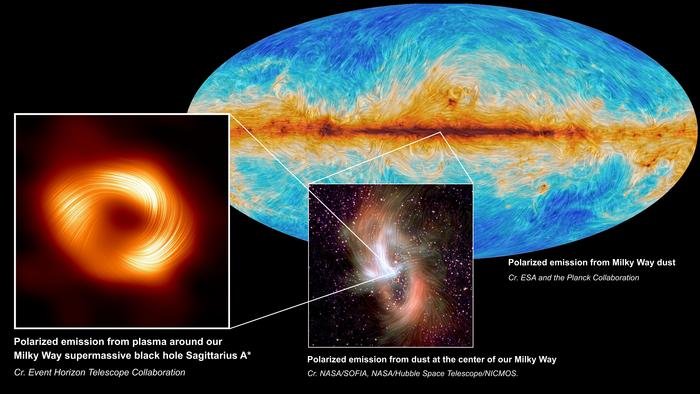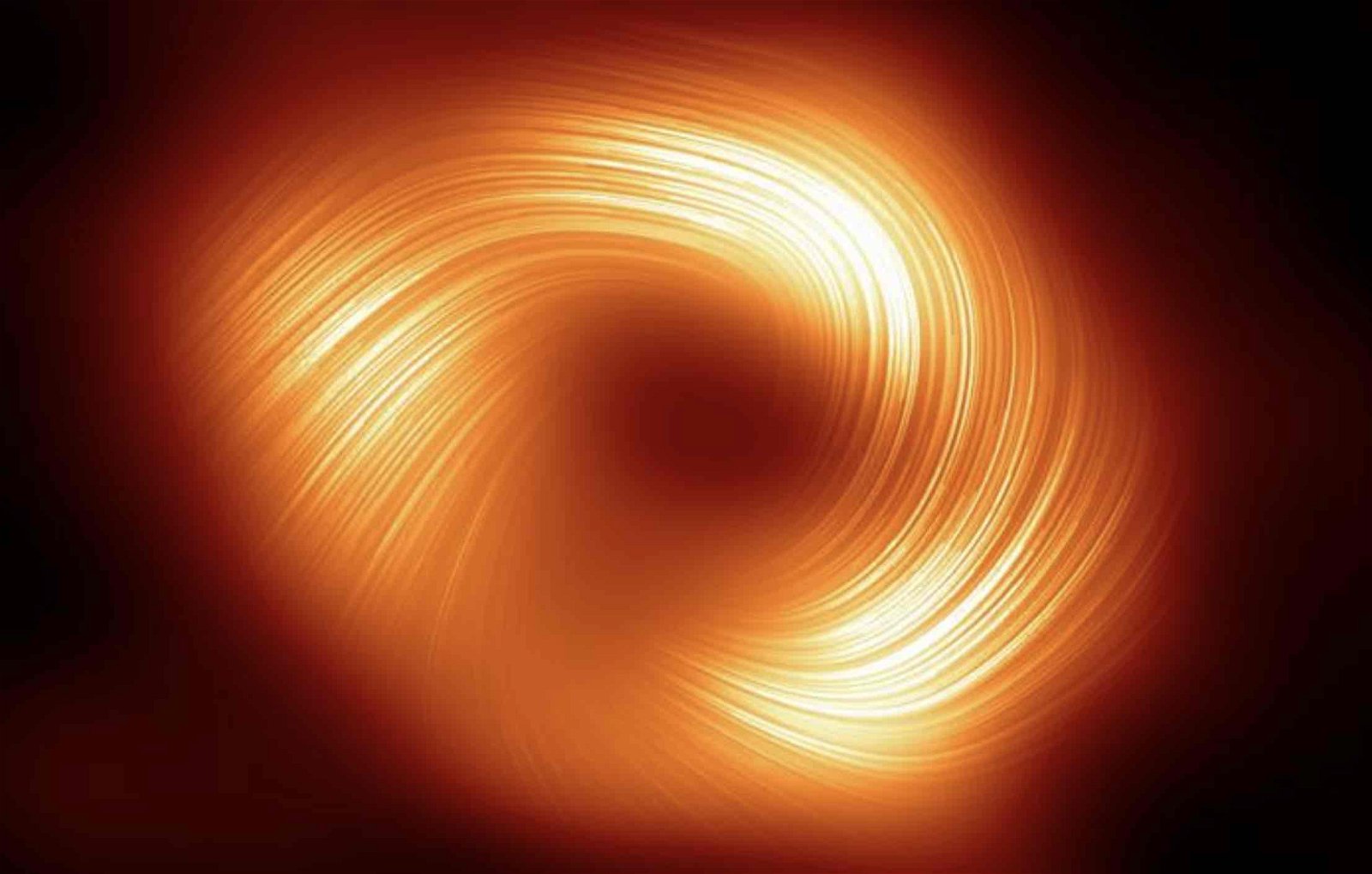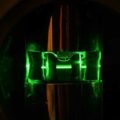New imagery obtained by the Event Horizon Telescope (EHT) collaboration is offering an unprecedented look at the dynamics of the supermassive black hole Sagittarius A*, revealing its strong and organized magnetic fields.
The image is the first to reveal the black hole in polarized light, which shows Sagittarius A* to be remarkably similar to another black hole located at the heart of the M87* galaxy.
The new findings suggest that these strong magnetic fields may be a regular feature of black holes and could potentially point to the existence of a hidden feature within Sagittarius A*.
The first image of Sagittarius A* obtained in 2022 revealed to scientists how much smaller the Milky Way’s black hole is than the one in the center of M87*, despite similarities in their appearance. Based on this, researchers were curious about what other commonalities the two black holes might share.


By studying Sagittarius A* in polarized light, the black hole was revealed to have magnetic fields surrounding it, much like the one in M87*, which produces powerful jets of material into the space surrounding it. Now, researchers believe Sagittarius A* might possess a hidden jet as well.
Project co-lead Sara Issaoun said that the new image reveals very strong and organized magnetic fields near the Sagittarius A*, although they also have a twisted appearance.
“Along with Sgr A* having a strikingly similar polarization structure to that seen in the much larger and more powerful M87* black hole, we’ve learned that strong and ordered magnetic fields are critical to how black holes interact with the gas and matter around them,” Issaoun said.
To our eyes, polarized light, which oscillates in a preferred orientation, cannot be distinguished from normal light. Plasmas surrounding black holes produce a polarization pattern due to the movement of particles along magnetic field lines, which now are helping astronomers to visualize what occurs within these extremely dense regions of space, as well as map the magnetic fields black holes produce.


Project co-lead Angelo Ricarte, a Fellow with the Harvard Black Hole Initiative, says imaging polarized light from the luminous gases surrounding black holes allowed the team to determine the structure and strength of the magnetic fields surrounding Sagittarius A*.
“Polarized light teaches us a lot more about the astrophysics, the properties of the gas, and mechanisms that take place as a black hole feeds,” Ricarte said.
Capturing imagery of a black hole like Sagittarius A* is no simple feat since the rate at which it moves makes the process very difficult. It required even more advanced equipment than past efforts that successfully captured M87*.
“It is exciting that we were able to make a polarized image of Sgr A* at all,” said astrophysicist Paul Tiede with the Center for Astrophysics, Harvard & Smithsonian (CfA).
“The first image took months of extensive analysis to understand its dynamical nature and unveil its average structure,” Tiede said. “Making a polarized image adds on the challenge of the dynamics of the magnetic fields around the black hole.
“Our models often predicted highly turbulent magnetic fields, making it extremely difficult to construct a polarized image,” Tiede added. “Fortunately, our black hole is much calmer, making the first image possible.”
The team says having images of both Sagittarius A* and M87* allows astronomers an unprecedented opportunity to make comparisons between black holes of different sizes, and over time, additional imagery will reveal more secrets about the behavior of their magnetic fields in relation to their size, as well as how jets are formed by these dense regions in our universe.
“A better understanding of the magnetic fields near black holes helps us answer several open questions—from how jets are formed and launched to what powers the bright flares we see in infrared and X-ray light,” said Michi Bauböck, a postdoctoral researcher at the University of Illinois Urbana-Champaign, in a statement.
The new findings were recently published in The Astrophysical Journal Letters.
Micah Hanks is the Editor-in-Chief and Co-Founder of The Debrief. He can be reached by email at micah@thedebrief.org. Follow his work at micahhanks.com and on X: @MicahHanks.

